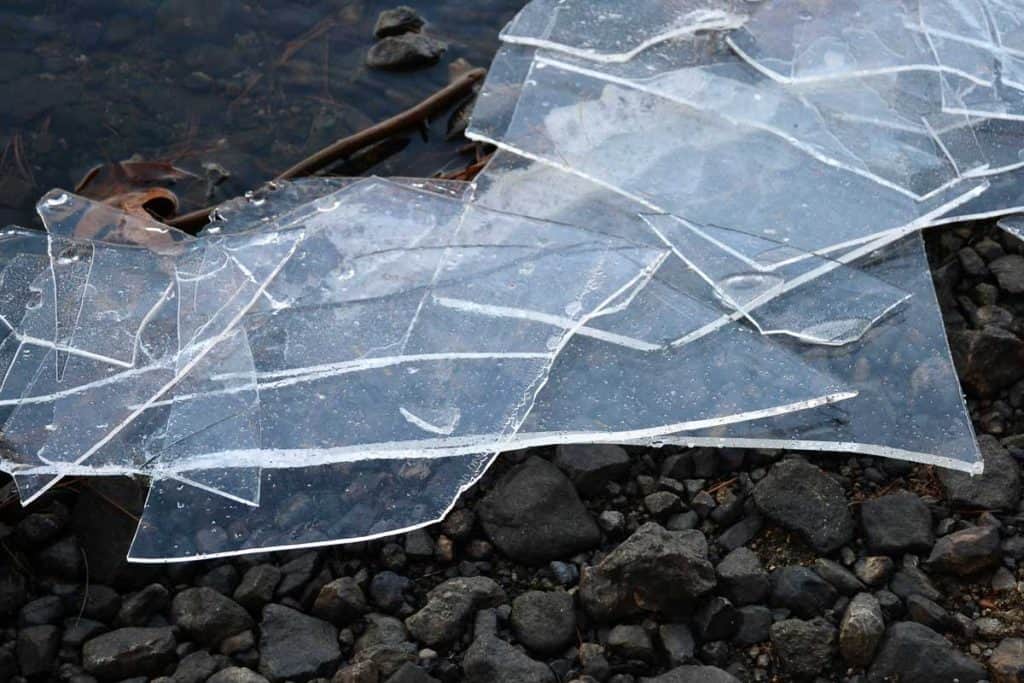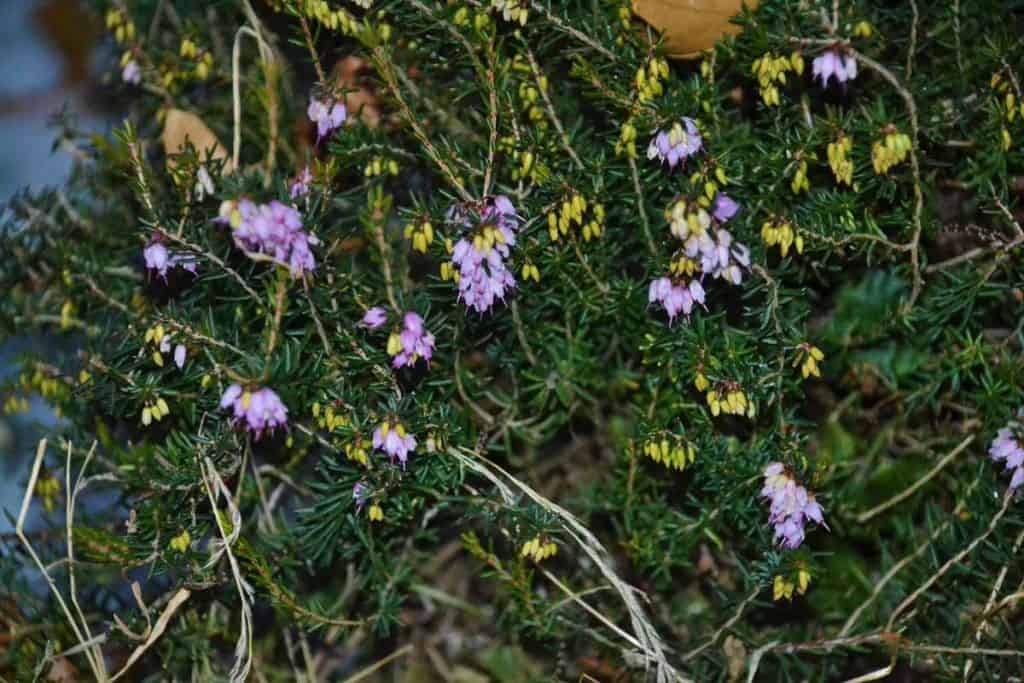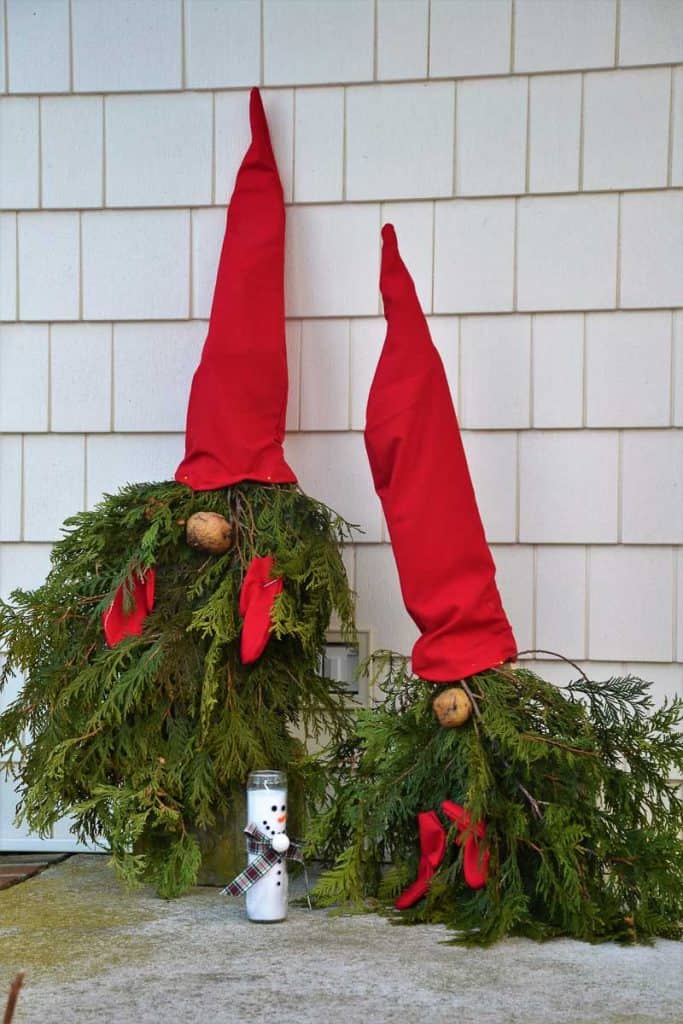Here’s what’s blooming in town this week to make your walks more enjoyable
Last Friday we saw the New Year’s first significant snow, and Saugus became a winter wonderland. Our ponds have responded to the cold temperatures by beginning to freeze over, and in a few spots the ice may be thick enough to support some snow, though far from safe for skating. At least one of the eagles from last winter has been seen a few times near Birch Pond this week, and some open water remains as a result of currents and wind.
Neighbors of Lorraine DiMilla, co-president of the Saugus Garden Club, have some new friends. This Christmas she made two adorable gnomes from branches cut from her garden and set them near the door on her front porch on High Street in the Pleasant Hills neighborhood. “My neighbors have stopped by to tell me ‘How Cute!’ One neighbor, Maureen, placed a snowman candle in front of them because she loved them so much,” Lorraine says. “I plan to leave them up until the end of January. I have replaced the nose once and will do it again if the potatoes freeze again.”
While the mums and roses seem to have given up for now, there is at least one flower still in bloom outdoors in Saugus: the winter heath, also known as the snow heath (Erika darleyensis ‘Mediterranean Pink’). Heath (Erica spp.) and the more familiar heather (Calluna spp.) are very similar in appearance, with small, almost needle-like evergreen foliage and slightly woody stems, growing about a foot tall. They both have tiny bell-shaped flowers, usually white or pink depending on variety. The most noticeable difference between heathers and heaths is that heathers bloom in May and June, while heaths usually bloom in winter – typically between February and April in our area, depending on the range of winter temperatures. Snow cover that lasts most of the season will block sunlight from the plants and delay bloom. On the other hand, intervals of warm temperatures after a brief to moderate cold spell tend to produce earlier flowers. January bloom is somewhat unusual, but given the ups and downs of temperature this winter, it is only slightly surprising.
Heath and heather flowers are said to symbolize independence, strength and luck. Both grow in rocky terrains with shallow soil and seem to embody resilience in adverse conditions. The word heath, in fact, can mean the name of the plant, but also, in the U.K. at least, the rough and rocky terrain where heaths and heathers often grow. This meaning is nearly synonymous with moor, the sort of rocky and sometimes desolate areas where soils too shallow for forests may grow in association with peat bogs. Heaths and heathers, along with sedges, mosses and other low plants, may be seen for miles, resulting in a mysterious and somewhat forbidding landscape. Numerous Victorian gothic novels take their tone from moors, including “Lorna Doone: A Romance of Exmoor” by R.D. Blackmore (set in Exmoor) and “Wuthering Heights” by Emily Brontë (set in the Yorkshire moors) to mention a few well-known ones. The setting in Dartmoor plays a major part of the story in Arthur Conan Doyle’s “The Hound of the Baskervilles.” While these may be the most familiar locations for heath and heather landscapes, other parts of Europe, such as Spain and the Netherlands, also have moors, and there are similar landscapes in Nigeria, Kenya and other parts of Africa. Most heath species developed either in Europe or Africa. Here in Saugus we generally find just one or two examples planted near a sunny doorway so they will be noticed and appreciated when they are blooming in the winter.
Editor’s Note: Laura Eisener is a landscape design consultant who helps homeowners with landscape design, plant selection and placement of trees and shrubs, as well as perennials. She is a member of the Saugus Garden Club and offered to write a series of articles about “what’s blooming in town” shortly after the outbreak of the COVID-19 pandemic. She was inspired after seeing so many people taking up walking.







